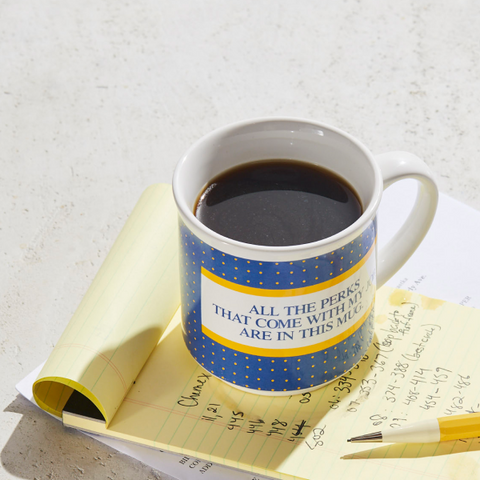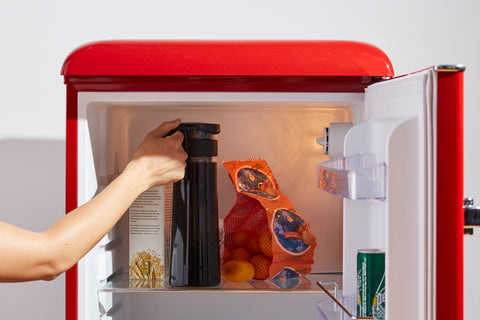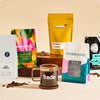Coffee is an exceptionally versatile and delicious drink. It can be enjoyed hot, cold, and even on ice—but how about at room temperature?
We’ve all brewed some java and then forgotten about it for hours—only to remember it after it’s already gone cold. If you’re still craving a cup in such situations, you may find yourself wondering, “How long can coffee sit out?”.
Coffee, like other foods and drinks, won’t last forever without proper storage. To ensure yours is still safe, consider these guidelines before taking a sip.
How Long Can Black Coffee Sit Out at Room Temperature?

If you’re like any other coffee lover, you reach for a fresh, hot cup the second your coffee maker finishes brewing. While some individuals like coffee best while it’s blistering hot, coffee doesn’t immediately go bad once it cools off.
In fact, it can take a lot longer than you may think for coffee to become undrinkable. That’s all because of how coffee and other beverages actually spoil.
Why Does Coffee Go Bad Sitting Out?
Coffee, water, and other beverages begin to go bad after exposure to bacteria. Practices such as reusing the same mug and being in an unclean environment can increase the amount of bacteria near your drink, thus raising its chances of going off. [1]
Coffee, however, has a couple of advantages over other beverages that can keep it safe longer, including:
-
Being boiled – Whether you favor the pot, an espresso machine, or a French press, your coffee is usually boiled before consumption (unless you only drink cold brew). Because boiling hot water can kill up to 99.999% of bacteria, you’re less likely to have any in your fresh cup of joe. [2]
-
Antibacterial qualities – Several scientific studies have shown that coffee has strong antibacterial qualities that can fight against many different strains of microbes. In fact, compounds in coffee, such as chlorogenic acid and caffeine, can be beneficial to humans, but toxic to the kinds of bacteria that get us sick. [3]
Despite these qualities, however, bacteria from the environment can still eventually get to your coffee and render it undrinkable. Before that happens, however, you might find its flavor has already gone off.
Volatile compounds in coffee mean its taste is time-sensitive, and the longer you let it sit, the less pronounced the flavor may be. [4] Furthermore, as coffee sits out, carbon dioxide from the environment dissolves into it, altering its chemistry and increasing its bitterness—and this affects both hot and cold brewed coffee. [5] While your java may still be safe to drink after all of this, it won’t be as tasty as a fresh cup.
There is a limit to brewed coffee’s shelf life, however. So, how long can black coffee sit out?
While your environment plays a huge role in how long your fresh coffee will last, generally, a hot mug’s contents should be destined for the sink if you let it sit overnight. In the case of cold brew coffee, the rule of thumb is that it shouldn’t sit out for longer than 2 days. [6]
How Long Can Coffee with Dairy Sit at Room Temperature?

Dairy products are notorious for their propensity to spoil quickly when left outside of the fridge. If you’re a fan of drinking coffee with milk or creamer, it won’t last nearly as long as it would otherwise if you were just drinking black coffee.
Dairy products are teeming with fats and other temperature-sensitive compounds that begin to go foul once warm. Here are a few key guidelines dictating the safe handling and storage of milk and other dairy products: [7]
-
When a room’s ambient temperature is below 90℉ (32℃), dairy products can sit out for two hours
-
When things get hotter, dairy products can spend a maximum of one hour outside of the fridge
When introducing milk to hot coffee, things can start to sour quickly. Drinking spoiled coffee creamer or milk can lead to abdominal cramping and potentially vomiting, so it’s best not to take risks when you’re uncertain. [8] If you’ve left your cafe au lait or cafe latte out for more than a couple of hours, don’t expect it to be safe to consume.
How to Keep Coffee Drinkable Longer

If you frequently get distracted from your morning mug or are an especially slow sipper, there are some methods you can use to keep your coffee fresh and safe longer. To extend the longevity of your joe, consider:
-
Pouring smaller cups that you can finish more quickly
-
Drinking coffee from a thermal mug with a lid to prevent your coffee from dipping into the “danger zone” in which foods and beverages begin to spoil (40°F–140°F) [9]
-
Putting a cap on it and storing it in the fridge
-
Using a pot that keeps your coffee hot and fresh throughout the day
Savor the Perfect Sips with Trade Coffee
Coffee is one of those rare pleasures that can be enjoyed in many forms—hot, cold, iced, or (within a reasonable frame of time) at room temperature.
Likewise, there’s a world of different styles of coffee waiting to be discovered—and one of the best ways to find them is through an online coffee subscription. With Trade, you can taste new coffees every month from a selection of over 450 unique roasts.
To make the process even smoother, take our simple coffee quiz to help us match you with flavor profiles that suit your taste preferences. Then, you can start brewing, sipping, and enjoying your ideal cup of coffee.
Sources:
- Time. You Asked: Can Water Go Bad?. https://time.com/
- World Health Organization. Boil Water. https://apps.who.int
- Frontiers in Nutrition. Potential Antimicrobial Properties of Coffee Beans and Coffee By-Products Against Drug-Resistant Vibrio cholerae. https://www.frontiersin.org/
- National Library of Medicine. The antibacterial effects of coffee extract, chlorhexidine, and fluoride against Streptococcus mutans and Lactobacillus plantarum: An in vitro study. https://www.ncbi.nlm.nih.gov/
- Smithsonian Magazine. What Makes Day Old Water Taste Funny?. https://www.smithsonianmag.com/
- Tasting Table. Cold Brew Vs. Nitro Cold Brew: What's The Difference?https://www.tastingtable.com/1136519/cold-brew-vs-nitro-cold-brew-whats-the-difference/
- National Dairy Council. How Long Can Milk Sit Out?. https://www.usdairy.com/
- Missouri Poison Center. Spoiled Milk. https://missouripoisoncenter.org/
- United States Department of Agriculture. "Danger Zone" (40 °F - 140 °F). https://www.fsis.usda.gov/









